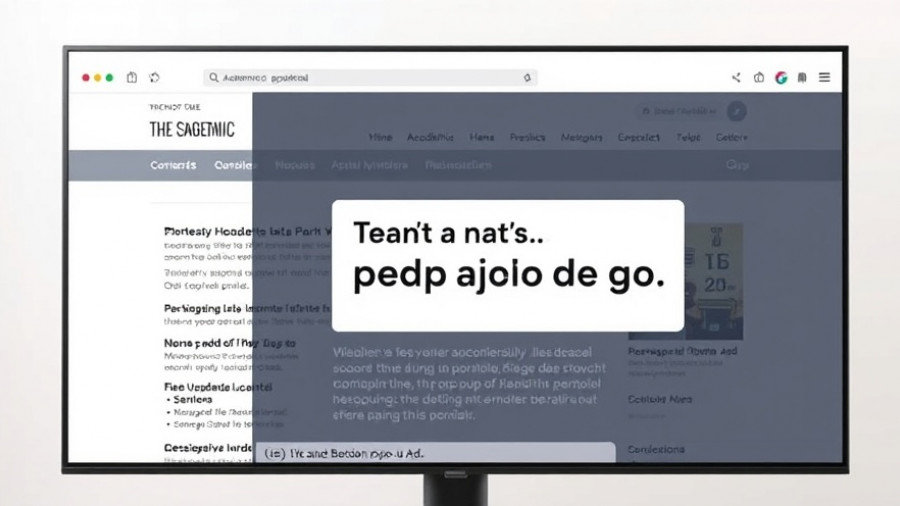
Revolutionizing Workflow with AI: Introducing Agent Mode and Office Agent
Microsoft is taking productivity to a new level with the launch of Agent Mode and Office Agent within the Microsoft 365 ecosystem. These advanced AI tools are designed to enhance the capabilities of popular applications such as Excel, Word, and PowerPoint, making them more intuitive and responsive to user needs.
How Agent Mode Transforms Office Applications
Agent Mode introduces a game-changing feature in Excel and Word, enabling users to accomplish multi-step tasks more efficiently. For example, in Excel, Agent Mode can automate complex analyses, generate formulas, and create engaging visualizations, all in response to user prompts. This marks a significant enhancement over previous AI capabilities, emphasizing real-time task orchestration and automated result verification.
In Word, the AI's capabilities extend into conversational document creation, suggesting improvements and clarifying content as users work. This collaborative feature fosters a unique partnership between users and AI, ensuring that even those with limited expertise can navigate advanced functionalities.
Office Agent: Instant Document Creation at Your Fingertips
The newly launched Office Agent is currently available to US-based subscribers of Microsoft 365 Copilot. This feature allows users to generate documents and presentations using natural language prompts directly through chat interfaces. As it conducts live research, the Office Agent ensures both accuracy and relevance, thus enhancing the quality of content generated.
These innovations reflect Microsoft's commitment to democratizing access to powerful AI-driven productivity tools, giving everyday users the ability to produce professional-grade documents with minimal effort.
The Technology Behind Agent Mode
Powered by advanced AI reasoning models, including those from OpenAI and Anthropic, both Agent Mode and Office Agent utilize cutting-edge technology to ensure a seamless user experience. Microsoft's benchmarks reveal that Agent Mode in Excel operates with an impressive accuracy of 57.2% across various spreadsheet tasks, showcasing its potential in streamlining workflows.
Moreover, the integration of these AI features into the existing Microsoft 365 environment signifies a broader trend in the workplace where artificial intelligence becomes a cornerstone of productivity, helping users save time and enhance their output.
Industry Experts Weigh In
Reactions from industry leaders and early adopters indicate a positive shift towards collaborative workflows that merge human capability with artificial intelligence. Analysts posit that tools like Agent Mode and Office Agent may not only increase productivity but also inspire a new wave of creative thinking among teams.
The ability for non-experts to easily access and utilize powerful Office tools is likely to catalyze a more inclusive atmosphere of innovation across businesses of all sizes.
Future Implications of AI in Productivity Tools
As Microsoft continues to enhance its Copilot technology, we can anticipate even more robust features that align with today's dynamic workplace demands. With projects underway to integrate agent functionalities not just for businesses but also for personal use, the implications for users are profound.
This initiative aligns with a broader industry trend towards integrating AI in everyday tools, reshaping how professionals approach daily tasks and creative projects. Companies that adapt to these innovations will likely foster more efficient work environments, ultimately leading to significant competitive advantages.
Conclusion: A New Era of Workplace Efficiency
By launching Agent Mode and Office Agent, Microsoft is setting a precedent for the future of work, where AI serves as both a powerful ally and a catalyst for creativity. The advancements made with Microsoft 365 Copilot solidify the company’s lead in the tech landscape, opening doors for users to leverage AI like never before.
The democratization of such sophisticated technology is an exciting prospect that promises to change not only how we work but also how we think about productivity and collaboration. As organizations begin to leverage these tools, the potential to drive innovation and efficiency will undoubtedly reshape business processes for years to come.
 Add Row
Add Row  Add
Add 




Write A Comment